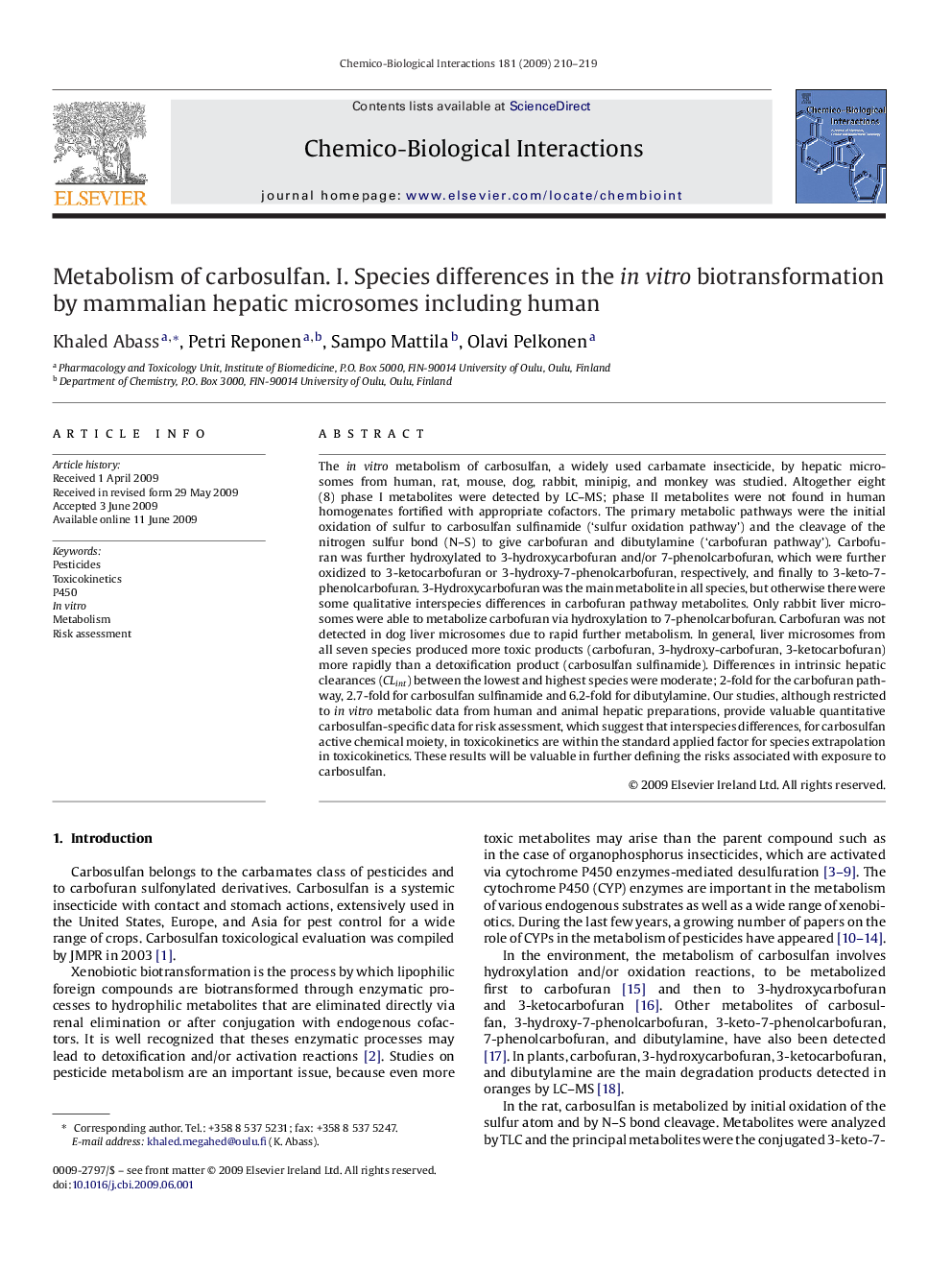| کد مقاله | کد نشریه | سال انتشار | مقاله انگلیسی | نسخه تمام متن |
|---|---|---|---|---|
| 2581287 | 1130183 | 2009 | 10 صفحه PDF | دانلود رایگان |

The in vitro metabolism of carbosulfan, a widely used carbamate insecticide, by hepatic microsomes from human, rat, mouse, dog, rabbit, minipig, and monkey was studied. Altogether eight (8) phase I metabolites were detected by LC–MS; phase II metabolites were not found in human homogenates fortified with appropriate cofactors. The primary metabolic pathways were the initial oxidation of sulfur to carbosulfan sulfinamide (‘sulfur oxidation pathway’) and the cleavage of the nitrogen sulfur bond (N–S) to give carbofuran and dibutylamine (‘carbofuran pathway’). Carbofuran was further hydroxylated to 3-hydroxycarbofuran and/or 7-phenolcarbofuran, which were further oxidized to 3-ketocarbofuran or 3-hydroxy-7-phenolcarbofuran, respectively, and finally to 3-keto-7-phenolcarbofuran. 3-Hydroxycarbofuran was the main metabolite in all species, but otherwise there were some qualitative interspecies differences in carbofuran pathway metabolites. Only rabbit liver microsomes were able to metabolize carbofuran via hydroxylation to 7-phenolcarbofuran. Carbofuran was not detected in dog liver microsomes due to rapid further metabolism. In general, liver microsomes from all seven species produced more toxic products (carbofuran, 3-hydroxy-carbofuran, 3-ketocarbofuran) more rapidly than a detoxification product (carbosulfan sulfinamide). Differences in intrinsic hepatic clearances (CLint) between the lowest and highest species were moderate; 2-fold for the carbofuran pathway, 2.7-fold for carbosulfan sulfinamide and 6.2-fold for dibutylamine. Our studies, although restricted to in vitro metabolic data from human and animal hepatic preparations, provide valuable quantitative carbosulfan-specific data for risk assessment, which suggest that interspecies differences, for carbosulfan active chemical moiety, in toxicokinetics are within the standard applied factor for species extrapolation in toxicokinetics. These results will be valuable in further defining the risks associated with exposure to carbosulfan.
Journal: Chemico-Biological Interactions - Volume 181, Issue 2, 7 October 2009, Pages 210–219